Business
The government surrenders to reality with rewritten Online News Act—and pleases no one: Peter Menzies
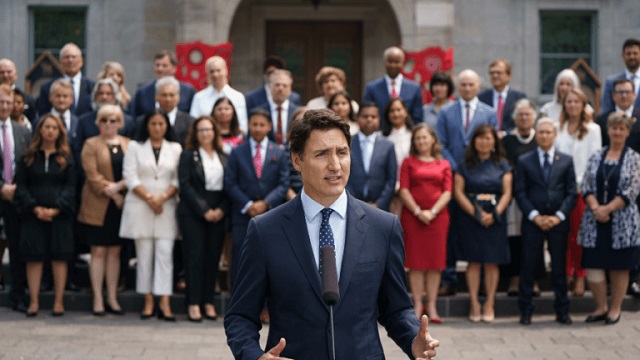
From the MacDonald Laurier Institute
By Peter Menzies
The shakedown of Meta and Google didn’t go as planned—but now they’re eyeing other lucrative targets.
There were some long faces in the news industry last week when Heritage Minister Pascale St-Onge rolled out the final terms of her surrender to reality.
Media executives who once campaigned for the Online News Act with sugar-plum visions of Big Tech cash dancing in their heads were left to deal with some pretty serious lumps of coal. After years of effort to procure what they once fancied would be hundreds of millions of dollars annually from web giants, all St-Onge could bring down the chimney was a bump up in Google’s spend to $100 million.
How much the mother of all search engines was already paying to publishers is unknown, but in-the-know estimates tend to range from $30-$50 million. Splitting the difference at $40 million would mean the industry—newspapers, broadcasters, and online platforms—wound up with $60 million in fresh cash, give or take.
That’s less than the Lotto Max jackpot Rhonda Malesku of Kamloops and Ruth Bowes of Edmonton shared last summer. A lot of money for Rhonda and Ruth for sure, but for an entire industry it’s a drop in a leaky bucket.
Then there’s the fact the Act resulted in Meta blocking all news links in Canada on Facebook and Instagram. Again, the exact cost is unknown but the social media company had been spending $18 million on journalism supports plus—and here is the killer—Meta estimated it had been sending $230 million a year worth of referrals to news websites.
Even if Meta is only half right, that still leaves the news industry many tens of millions of dollars worse off. If Meta’s estimate is accurate—and no one has really debunked it—the scenario is a lot uglier.
This is what happens when you make things up.
The Act was rooted in the make-believe premise that “web giants” were profiting from “stealing” news. Legislation was designed on that basis to force Big Tech to “negotiate” commercial deals and share those profits with all news organizations.
In the end, as Michael Geist has detailed, that charade of “compensation” was dropped as the government, desperately afraid Google would follow Meta’s lead, posted regulations that essentially rewrote the Act to suit the search engine and, as an aside, puzzle lawyers. All that the media were able to salvage from the hustle was a fund they wound up fighting over like street urchins in a soup kitchen.
Here, St-Onge actually did something sensible. Her original plan was to have the fund distributed solely on a per journo basis. In other words, if there are 10,000 journalists, $100 million would turn into $10,000 per journo, never mind whether they are paid $35,000 or $150,000. The problem with that is that one in three Canadian reporters works for CBC, which is not in mortal peril. The next highest is Bell Media, whose parent company made $10 billion last year. Meanwhile, the Toronto Star is hemorrhaging at a rate of $1 million a week, small centres are becoming news deserts, and Postmedia’s stable of zombie newspapers continues to, well, zombie on.
Broadcasters would have consumed 75 percent of the loot and the vast majority of the cash would wind up with companies for whom news is not a primary aspect of their operations.
St-Onge changed that to cap private broadcasters’ windfall at 30 percent, with CBC limited to 7 percent.
That means 63 percent of the money will go to operators in the greatest peril which, for a fund resulting from a need to address industrial poverty, is at least rational.
Still, there was grumbling.
“Well, this is disappointing—sure wasn’t expecting a cap on broadcasters’ access to compensation,” Tandy Yull, vice president of policy and regulatory affairs for the Canadian Association of Broadcasters, posted on LinkedIn.
“Hey, Universe! More needs to be done to support Canadians’ most important providers of news, local radio, and television stations, who are facing significant—even existential—declines in advertising revenue,” she added.
Yull went on to stake broadcasters’ claim to government assistance currently reserved for newspapers and online-only media: the Journalism Labour Tax Credit and the Local Journalism Initiative.
And of course “our democracy demands that we explore these and other options—soon.”
She may not have long to wait.
Broadcasters opened up a fresh lobbying for loot campaign just last month when the Canadian Radio-television and Telecommunications Commission (CRTC) held a hearing to launch the implementation of the Online Streaming Act.
Supposedly about funding Canadian entertainment programming, the concept of a news fund was introduced early and repeated often.
Commissioners appeared happy to embrace well-worn lines about a news “crisis” that needs “urgent” attention to prevent—cue the tympany—the death of democracy. And they did so without needing to be persuaded there was any rational reason for creating a fund which, logically, makes no more sense than taxing cinemas to pay for newspapers. Nor were any concerns raised about impacts on entrepreneurship and online innovators.
“Local news is in crisis and requires immediate intervention,” Susan Wheeler of Rogers, which made $7.12 billion last year, told the panel.
“A fundamental outcome of the modernized contribution regime must include new mechanisms to provide long‑term financial support for high‑quality Canadian‑produced broadcast news from credible outlets,” she said, calling for 30 percent of money raised from foreign online streaming companies to be directed to a news fund “accessible by all private TV and radio stations producing news.”
The humiliating squabbling over the remnant scraps of the Online News Act clearly wasn’t the end of the Great Canadian Quest for other people’s money.
So maybe the shakedown of Meta and Google didn’t quite work out. But Spotify, Disney+, and Netflix? They have money. Let’s mug them instead.
It’s not like anything bad could happen. Right?
Peter Menzies is a Senior Fellow with the Macdonald-Laurier Institute, a former newspaper executive, and past vice chair of the CRTC.
Business
Musk Slashes DOGE Savings Forecast By 85%


From the Daily Caller News Foundation
By Thomas English
Elon Musk announced Thursday that the Department of Government Efficiency (DOGE) is now targeting $150 billion in federal savings for fiscal year 2026 — dramatically scaling back earlier claims of slashing as much as $2 trillion.
Musk initially projected DOGE would deliver $2 trillion in savings by targeting government waste, fraud and abuse. That figure was halved to $1 trillion earlier this year, but Musk walked it back again at Thursday’s Cabinet meeting, saying the revised $150 billion projection will “result in better services for the American people” and ensure federal spending “in a way that is sensible and fair and good.”
“I’m excited to announce we anticipate saving in FY ’26 from a reduction of waste and fraud a reduction of $150 billion dollars,” Musk said. “And some of it is just absurd, like, people getting unemployment insurance who haven’t been born yet. I mean, I think anyone can appreciate — I mean, come on, that’s just crazy.”
The announcement marks the latest in a string of revised projections from Musk, who has become the face of President Donald Trump’s aggressive federal efficiency agenda.
“Your people are fantastic,” the president responded. “In fact, hopefully they’ll stay around for the long haul. We’d like to keep as many as we can. They’re great — smart, sharp, finding things that nobody would have thought of.”
Musk originally floated the $2 trillion figure during campaign appearances last fall.
“I think we could do at least $2 trillion,” Musk said at the Madison Square Garden campaign rally in November. “At the end of the day, you’re being taxed — all government spending is taxation … Your money is being wasted, and the Department of Government Efficiency is going to fix that.”
By January, he softened expectations to a “really quite achievable” $1 trillion target before downsizing that figure again this week.
“Our goal is to reduce the deficit by a trillion dollars,” Musk told Fox News’ Bret Baier “Looked at in total federal spending, to drop the federal spending from $7 trillion to $6 trillion by eliminating waste, fraud and abuse … Which seems really quite achievable.”
DOGE’s website, which tracks cost-saving initiatives and contract cancellations, currently calculates total federal savings at $150 billion.
2025 Federal Election
Taxpayers urge federal party leaders to drop home sale reporting to CRA

Party leaders must clarify position on home equity tax
The Canadian Taxpayers Federation is calling on all party leaders to prove they’re against home equity taxes by pledging to immediately remove the Canada Revenue Agency reporting requirement on the sale of primary residences.
“Canadians rely on the sale of their homes to pay for their golden years,” said Carson Binda, CTF B.C. Director. “After the government spent hundreds of thousands of dollars flirting with home taxes, taxpayers need party leaders to prove they won’t tax our homes by removing the CRA reporting requirement.”
Right now, the profit you make from selling your home is exempt from the capital gains tax. However, in 2016, the federal government mandated that Canadians report the sale of their homes to the CRA, even though it’s tax exempt.
The Canada Mortgage and Housing Corporation also spent at least $450,000 to study and influence public opinion in favour of home equity taxes. The report recommended a home equity tax targeting the “housing wealth windfalls gained by many homeowners while they sleep and watch TV.”
“A home equity tax would hurt seniors saving for their golden years and make homes more expensive for younger generations,” Binda said. “If the federal government isn’t planning on imposing a home equity tax, then Canadians shouldn’t be forced to report the sale of their home to the CRA.”
-

 2025 Federal Election2 days ago
2025 Federal Election2 days agoRCMP memo warns of Chinese interference on Canadian university campuses to affect election
-

 2025 Federal Election1 day ago
2025 Federal Election1 day agoResearchers Link China’s Intelligence and Elite Influence Arms to B.C. Government, Liberal Party, and Trudeau-Appointed Senator
-
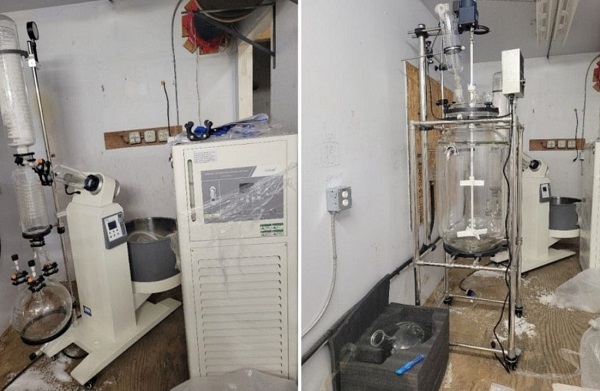
 Business21 hours ago
Business21 hours agoCanadian Police Raid Sophisticated Vancouver Fentanyl Labs, But Insist Millions of Pills Not Destined for U.S.
-
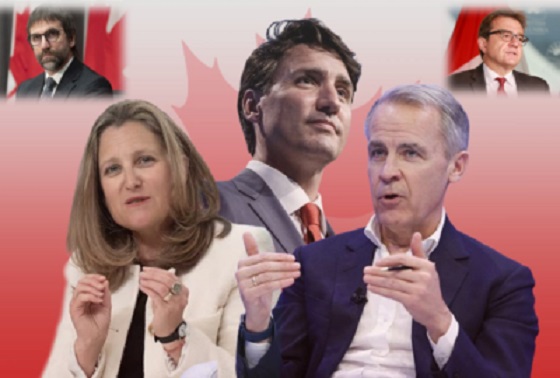
 2025 Federal Election2 days ago
2025 Federal Election2 days agoThe status quo in Canadian politics isn’t sustainable for national unity
-
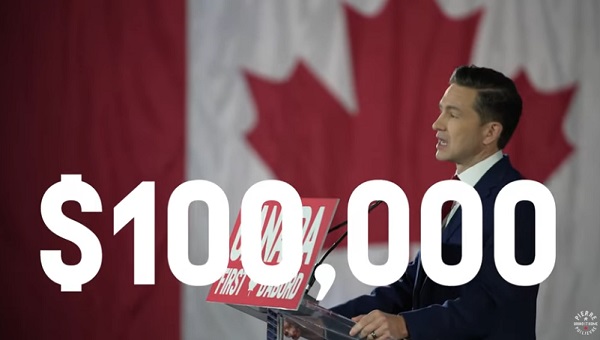
 2025 Federal Election2 days ago
2025 Federal Election2 days agoPoilievre Announces Plan To Cut Taxes By $100,000 Per Home
-
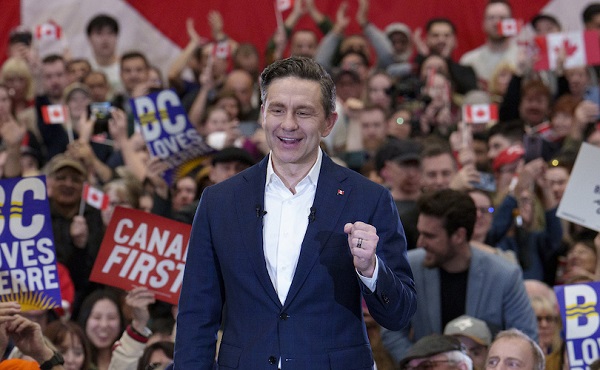
 2025 Federal Election1 day ago
2025 Federal Election1 day agoTwo Canadian police unions endorse Pierre Poilievre for PM
-
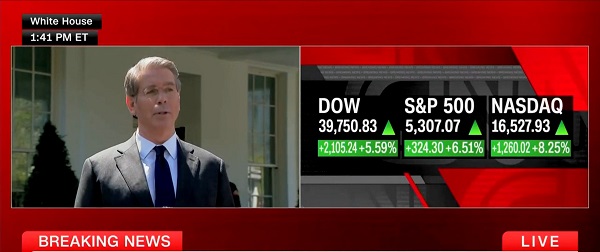
 Business2 days ago
Business2 days agoScott Bessent Says Trump’s Goal Was Always To Get Trading Partners To Table After Major Pause Announcement
-

 2025 Federal Election1 day ago
2025 Federal Election1 day agoCarney needs to cancel gun ban and buyback






